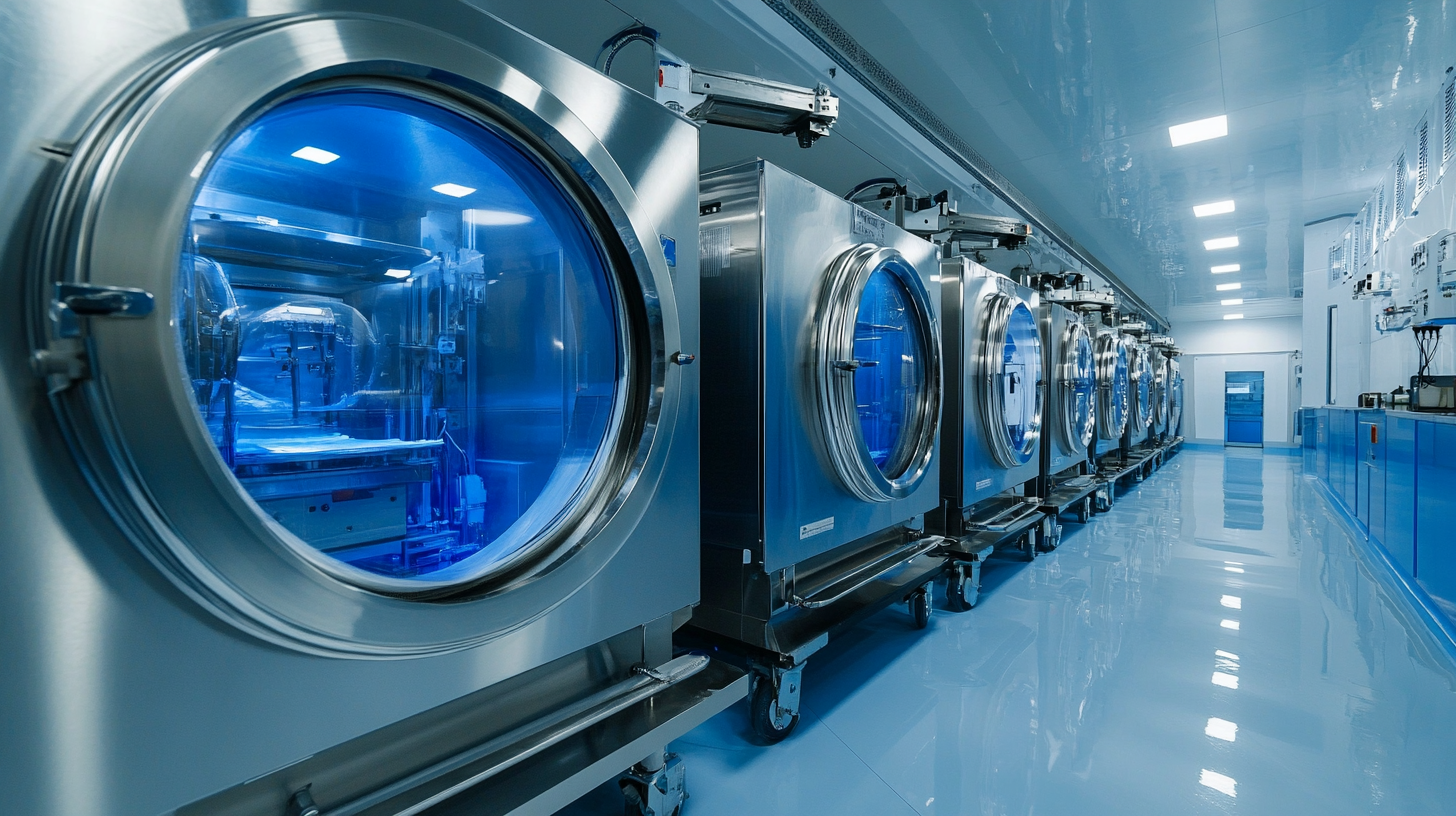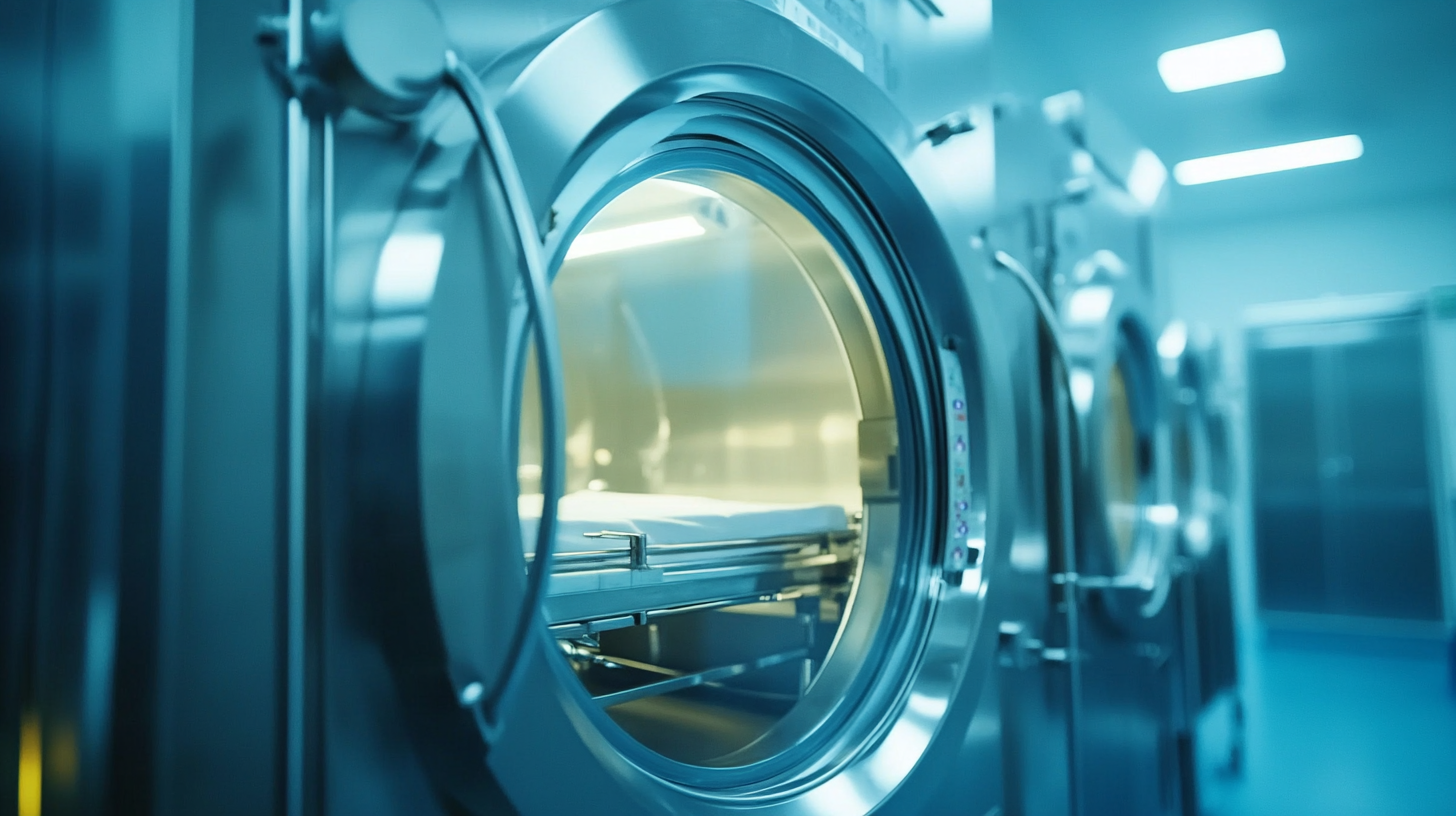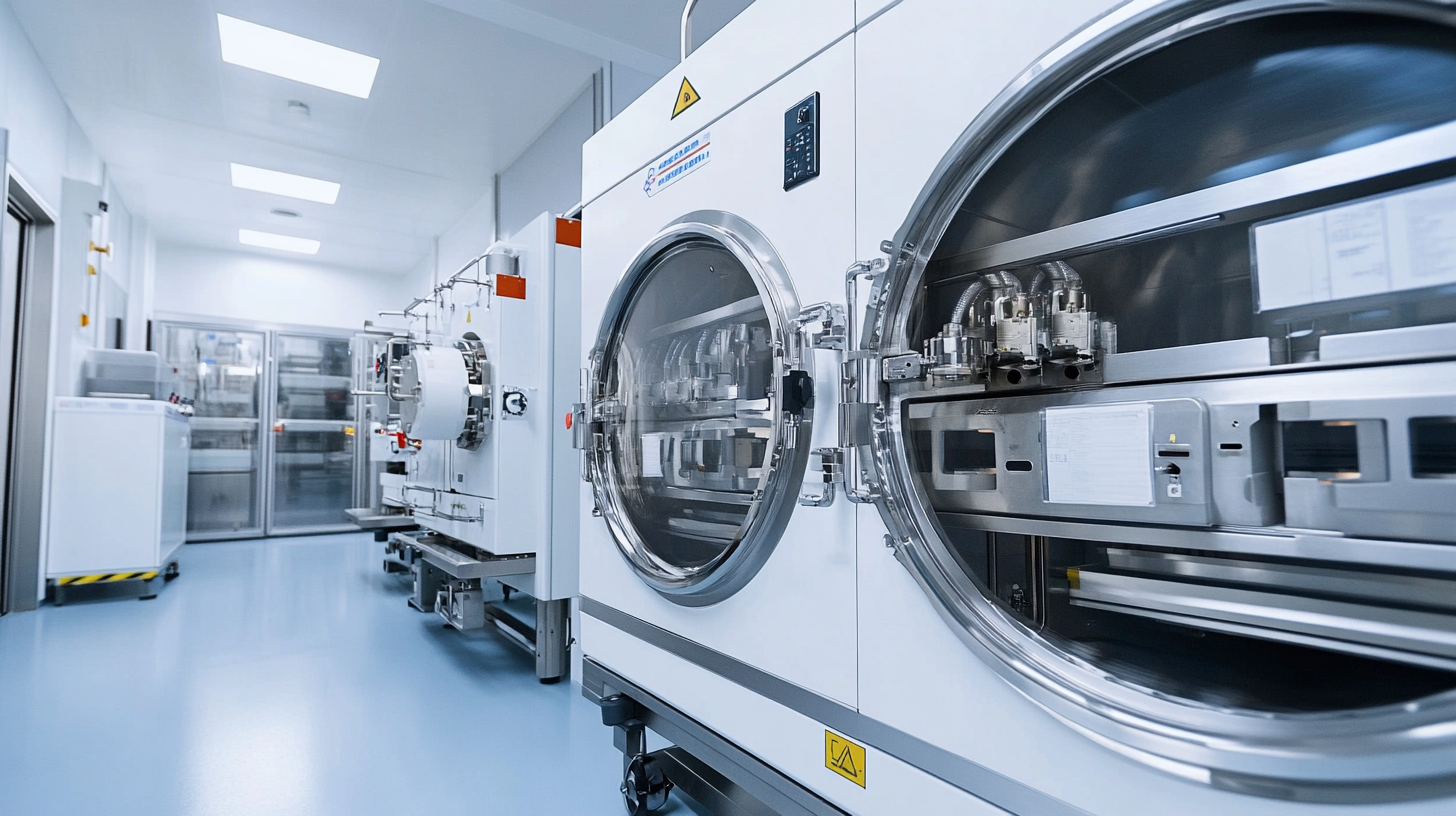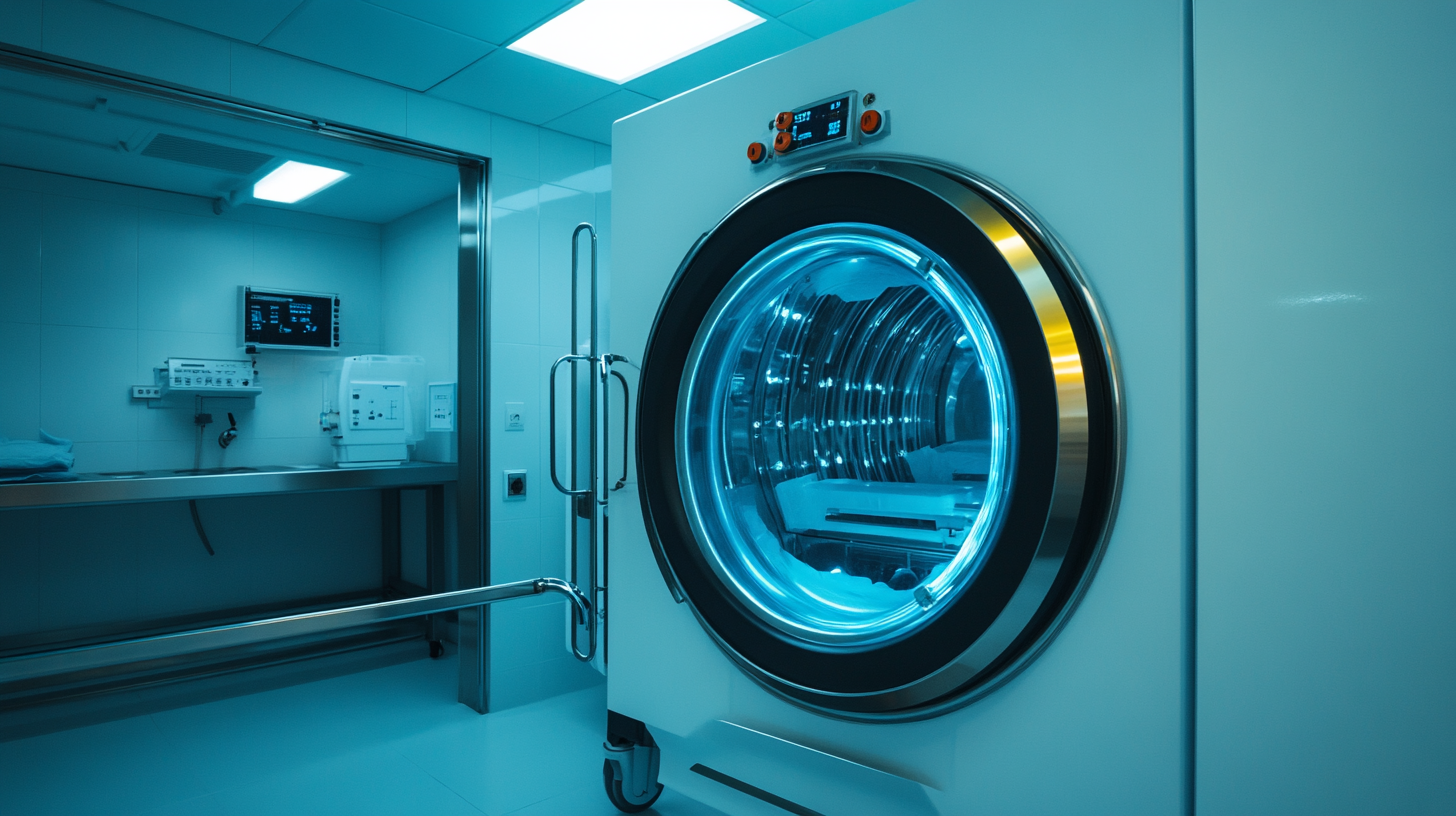- Home
- Products
- Services
- Product concept development
- Engineering
- Design for manufacturability
- Regulatory services
Read more - Material selection and formulation
- Prototyping
- Testing and validation
Read more - Production process development
- Custom tooling
- Manufacturing
- Finishing operations
- Assembly
- Packaging
- Private labeling
- Sterilization
Read more
- Resources
- Careers
- Search
7 Essential Factors Driving the Growth of Autoclave Sterilization in the Medical Industry
In recent years, the healthcare sector has witnessed significant advancements in sterilization methods, with Autoclave Sterilization emerging as a cornerstone technology in medical facilities around the globe. According to a recent market analysis by Research and Markets, the global market for sterilization services is projected to reach $8.67 billion by 2026, growing at a CAGR of 10.5% from 2021. This trend underscores the increasing demand for effective sterilization solutions to combat the rising prevalence of healthcare-associated infections (HAIs), which, as reported by the World Health Organization, affect hundreds of millions of patients worldwide each year.
The growth of Autoclave Sterilization is driven not only by the urgent need for sterile medical instruments but also by the evolving regulatory standards that mandate stringent infection control protocols in hospitals and clinics. According to a study published by the American Society for Microbiology, the implementation of robust sterilization practices has been linked to a 50% reduction in the incidence of HAIs, thereby highlighting the critical role that Autoclave Sterilization plays in safeguarding patient health. As we explore the essential factors contributing to the growth of this vital sterilization method, it becomes evident that its adoption is crucial for advancing patient safety and enhancing healthcare outcomes.

Factors Influencing Demand for Autoclave Sterilization in Healthcare Settings
The demand for autoclave sterilization in healthcare settings is on the rise, driven by several key factors essential for maintaining patient safety and operational efficiency. A crucial element influencing this demand is the increasing focus on infection control within medical facilities. According to a report by MarketsandMarkets, the global sterilization equipment market, which includes autoclaves, is projected to grow from $4.7 billion in 2020 to $7.0 billion by 2025, highlighting the critical role that sterilization methods play in healthcare. Another significant factor is the growing volume of surgical procedures and medical interventions. As reported by the American College of Surgeons, the number of surgical operations is expected to increase by approximately 10% over the next decade, necessitating more effective sterilization techniques to ensure the safety of surgical instruments and prevent healthcare-associated infections (HAIs). Autoclave sterilization is recognized for its ability to effectively eliminate bacterial spores, a capability that is paramount in today’s surgical environments. Furthermore, advancements in autoclave technology, including improved speed, efficiency, and user-friendliness, are propelling adoption rates in various healthcare settings. A 2021 study published in the Journal of Hospital Infection indicates that modern autoclaves equipped with automated monitoring systems can reduce sterilization cycle times by up to 30%, thereby enhancing workflow and reducing turnaround times for sterile instruments. This efficiency not only supports busy medical teams but also aligns with the industry's overarching goal of improving patient outcomes by ensuring that all procedures are carried out using adequately sterilized instruments.

Technological Advancements Driving Autoclave Efficiency and Effectiveness
The medical industry has witnessed transformative advancements in sterilization methods, particularly with the increasing efficiency and effectiveness of autoclave technology. One significant factor driving this progress is the integration of smart technology into autoclaves. These modern machines now feature automated cycles that optimize the sterilization process, reducing human error while ensuring consistent results. Sensory advancements allow for real-time monitoring of temperature and pressure, which not only enhances reliability but also streamlines workflow in medical facilities.
Another critical element is the development of eco-friendly sterilization solutions that align with environmental sustainability goals. Modern autoclaves utilize less water and energy while still achieving superior sterilization results. This not only supports healthcare facilities in reducing their carbon footprint but also meets regulatory demands for energy efficiency.
Furthermore, the expansion in the types of materials that can be effectively sterilized has broadened the application of autoclaves in various medical settings. Innovations in packaging and materials have enabled the safe sterilization of complex instruments and devices, which is vital for ensuring patient safety and high standards of care. As these technological advancements continue to evolve, autoclave sterilization stands to play an increasingly crucial role in maintaining sterile environments across the healthcare landscape.

Regulatory Pressure and Compliance Requirements in Medical Sterilization
The medical sterilization landscape is rapidly evolving, driven largely by the increasing regulatory pressure and compliance requirements imposed on healthcare facilities. According to a recent report by MarketsandMarkets, the global sterilization equipment market is projected to reach USD 7.6 billion by 2025, evidencing the critical importance of adhering to stringent regulatory standards in ensuring patient safety and infection control.
Regulatory bodies such as the FDA and the European Medicines Agency (EMA) play a crucial role in shaping sterilization practices within the medical industry. In their extensive guidelines, these agencies outline necessary validation processes for sterilization methods, including autoclaving, which remains a preferred choice due to its effectiveness in eliminating pathogens. Failure to comply with these regulations can result in severe penalties, product recalls, and, more importantly, compromised patient safety.
Moreover, in response to the COVID-19 pandemic, the push for compliance has intensified, with hospitals and clinics ramping up their sterilization protocols to align with updated health guidelines. A report from the World Health Organization indicates that effective sterilization is paramount in controlling hospital-acquired infections, further underscoring the need for medical facilities to invest in robust autoclave systems. By investing in technologies that meet regulatory demands, healthcare institutions not only enhance their operational efficiency but also improve patient outcomes through improved sterilization practices.

Rising Infection Control Standards and Their Impact on Autoclave Usage
As infection control standards continue to rise globally, the medical industry is witnessing a marked increase in the utilization of autoclave sterilization. The World Health Organization (WHO) has reported that healthcare-associated infections (HAIs) affect millions of patients each year, leading to increased hospital stay, treatment costs, and morbidity. In response, healthcare providers are increasingly adopting stringent sterilization protocols to mitigate these risks, emphasizing the importance of autoclaves in their infection control arsenal.
According to a report by Grand View Research, the global autoclave market is projected to reach USD 4.5 billion by 2027, expanding at a compound annual growth rate (CAGR) of 6.5%. This growth is largely attributed to the growing demand for sterile medical instruments driven by rising healthcare standards. For instance, the Centers for Disease Control and Prevention (CDC) actively promote the use of proper sterilization techniques, highlighting autoclaving as a highly effective method to eliminate pathogens and ensure patient safety.
Moreover, the emergence of advanced autoclave technologies further enhances their role in infection control. Modern autoclaves boast features like programmable cycles, steam quality monitoring, and data logging capabilities, which not only optimize sterilization efficacy but also facilitate compliance with regulatory standards. As healthcare facilities strive to uphold the highest infection control practices, the reliance on autoclave sterilization is set to intensify, reflecting a broader commitment to patient safety and quality care.
Market Growth Projections and Key Players in the Autoclave Industry
The autoclave sterilization market is experiencing significant growth, driven by increasing demands for effective sterilization solutions in the medical industry. As per recent analyses, the global autoclave market is projected to expand from USD 2.2 billion in 2024 to approximately USD 3.68 billion by 2034. This impressive growth, with a noteworthy compound annual growth rate (CAGR), is largely attributed to heightened awareness regarding infection control and the safety of medical devices.
Several key factors are fueling this expansion. The surge in surgical procedures, coupled with the growing prevalence of hospital-acquired infections, underscores the necessity for efficient sterilization methods. The U.S. sterilization equipment market, for example, indicates a robust foundation for autoclave utilization, showcasing diverse product types including thermal and steam sterilizers. The shift towards advanced sterilization technologies, such as pulse vacuum steam sterilizers, further supports this trend, promising enhanced efficiency and reliability.
In addition to rising demand, the competitive landscape is also evolving, with both global and regional players entering the market. The bench-top dental autoclave segment, in particular, is poised for substantial growth, reflecting the increasing incorporation of autoclave systems within dental practices. As the industry progresses, continuous innovation and adherence to stringent regulatory standards will remain pivotal to capture market share and ensure patient safety.







